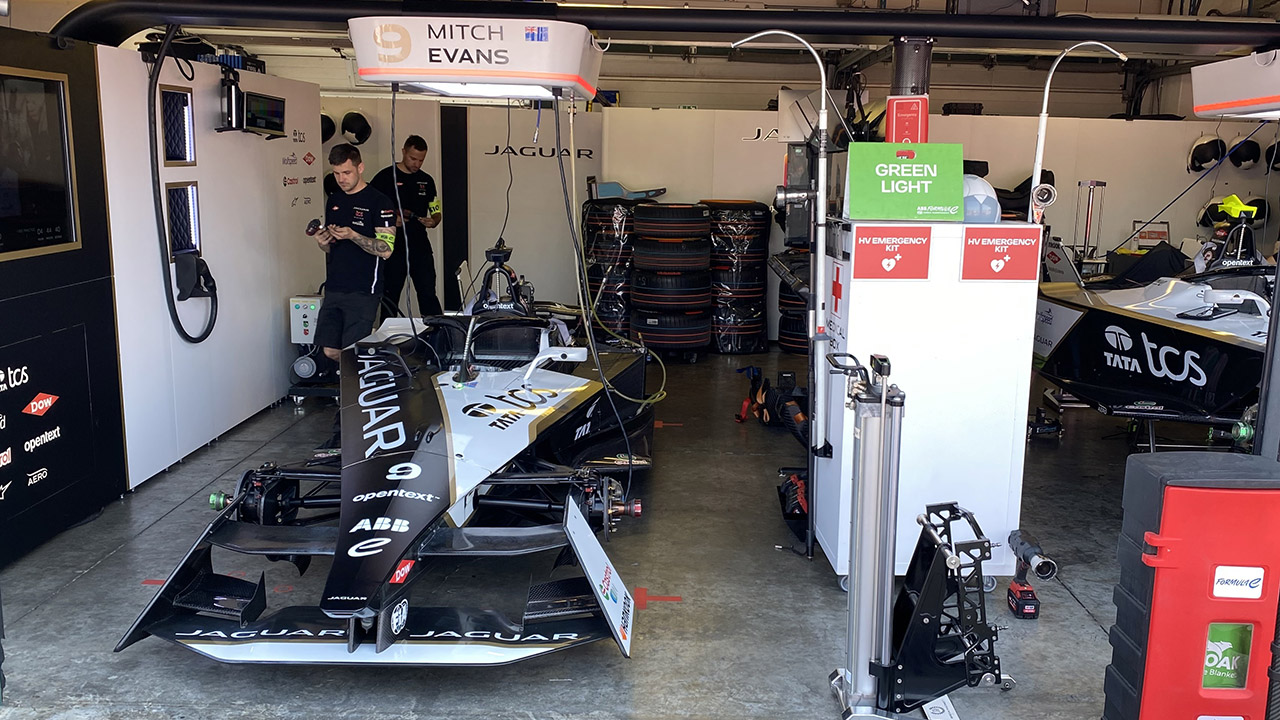|
|||||||
|
|
|
 |
|
|
Strumenti |
|
|
#1 |
|
Member
Iscritto dal: Mar 2009
Messaggi: 129
|
[Aiuto] Latenza dei driver alta (a momenti), CPU alta
Buongiorno a tutti, spero questa sia la sezione giusta, ho provato a cercare sul forum e mi sento disorientato, non esiste una specifica sezione dove si possa chiedere aiuto. SPero vada bene qui, per me è importante raccogliere qualche parere, grazie!
Purtroppo sto esperendo una brutta situazione con un server, e non so bene che cosa sostituire per risolvere il problema, chiedo a voi se vie è mai capitato qc di simile. Ho un server con AMD FX-6300 su piastra AsRock 960GM-VGS3 FX per videosorveglianza, il carico normalmente è molto basso, circa il 6% della CPU, che monta un ottimo dissipatore, e la temperatura è di solito 53°. Il server visualizza costantemente il mosaico delle telecamere su Nvidia GT-610 (che quindi è un pò sotto stress h24). Win7 64 aggiornato In passato ho avvertito dei lag, con schizzi anche a CPU 100%, e quando operavo attivamente sul server magari addirittura dei lag da frizzare il sistema per qualche secondo. Chiudendo il mosaico e il servizio del sistema di registrazione la cpu si abbassava.. ma bastava un programma qualsiasi per farla schizzare in alto con poco (quindi il software di videosorvegl in sè centra poco). Anche la temperatura della CPU del processore aumentava di conseguenza. Avevo capito che qualcosa a Ring molto elevato impegnava grandi risorse e con un programma (Driver-Lantency.exe) ho visto che i driver avevano delle latency pazzesche, anche quasi di mezzo secondo! Avevo imputato il problema alla scheda di rete perchè quella che può generare molti interrupt, ho provato ad aggiore i driver ma niente, alla fine l'ho disabilitata (fa parte della Mobo) sotto Windows, e ne ho comprata una PCI. Avevo anche cambiato dissipatore perchè questi colpi a 100% avevano fatto bloccare la ventola della CPU e il sistema andava in crash dopo pochi secondi dall'avvio per sovratemperatura. Sembrava che avessi individuato il problema, tutto è andato bene fino qc gg fa, (dopo 7-8 mesi) quando il problema si è ripresentato, non cuccede continuamente, si alternano fasi normali a fasi in cui le latency dei driver sono alte, per poi tornare (senza riavviare) a latency basse, nel giro di parecchi minuti (ad esempio 5 ore di latency normale, 2 di alta, ecc.), e con sempre lo stesso carico di lavoro.. identico: lo stream delle telecamere (quantità quindi di interrupt) è sempre lo stesso. Quando il latency si verifica se riavvio il sistema molto probabilmente si pianta prima che Windows parta.. forse non esce neanche la schermata del Bios (scusate non ce l'ho davanti) ma il classico trattino in alto lampeggiante. Ho provato a farlo lavorare senza i driver nvidia, coi driver microsoft, ma il problema si verifica lo stesso, forse però di meno frequente! Qualcosa nell'hardware va secondo me in crisi forse per temperatura, forse per la polvere, forse perchè le shede madri As Rock fanno un pò schifo a livello di robustezza (mi è già successo che non partivano dopo il reboot). Se si pianta al reboot il problema si risolve solo staccando l'alimentazione e aspettando un attimo ci i condensatori si scarichino, il tastino reset non risolve il problema. Secondo me è o la Mobo (più probabile) o la scheda video, voi che dite? Vi chiedo perchè non voglio pagare la Mobo per poi accorgermi che il problema era nella scheda video. Esiste un modo per discriminare i driver? Per scoprire quale driver crea il latency? Nessun modo? Grazie mille!!! |
|
|

|
|
|
#2 |
|
Bannato
Iscritto dal: Oct 2002
Messaggi: 29230
|
Prova latencymon.
Hai antivirus o firewall terzi installati? |
|
|

|
|
|
#3 |
|
Member
Iscritto dal: Mar 2009
Messaggi: 129
|
ciao! grazie per l'aiuto! Questo è un programma davvero utile!
Al momento la CPU st a livelli molto bassi, nonostante tutto si nota un problema sugli interrupt, mentre il servizio che occupa di più (ma gran lunga di meno rispetto alle latenze di interrupt è storport.sys. Ci tengo a dire che i dischi (2) hanno valori buoni di SMART SYSTEM INFORMATION _________________________________________________________________________________________________________ Computer name: VDV-SERVER1 OS version: Windows 7 Service Pack 1, 6.1, build: 7601 (x64) Hardware: ASRock, 960GM-VGS3 FX CPU: AuthenticAMD AMD FX(tm)-6300 Six-Core Processor Logical processors: 6 Processor groups: 1 RAM: 4095 MB total _________________________________________________________________________________________________________ CPU SPEED _________________________________________________________________________________________________________ Reported CPU speed: 3514 MHz Measured CPU speed: 1 MHz (approx.) Note: reported execution times may be calculated based on a fixed reported CPU speed. Disable variable speed settings like Intel Speed Step and AMD Cool N Quiet in the BIOS setup for more accurate results. WARNING: the CPU speed that was measured is only a fraction of the CPU speed reported. Your CPUs may be throttled back due to variable speed settings and thermal issues. It is suggested that you run a utility which reports your actual CPU frequency and temperature. _________________________________________________________________________________________________________ MEASURED INTERRUPT TO USER PROCESS LATENCIES _________________________________________________________________________________________________________ The interrupt to process latency reflects the measured interval that a usermode process needed to respond to a hardware request from the moment the interrupt service routine started execution. This includes the scheduling and execution of a DPC routine, the signaling of an event and the waking up of a usermode thread from an idle wait state in response to that event. Highest measured interrupt to process latency (µs): 19428,696959 Average measured interrupt to process latency (µs): 5,346042 Highest measured interrupt to DPC latency (µs): 115,083382 Average measured interrupt to DPC latency (µs): 2,233290 _________________________________________________________________________________________________________ REPORTED ISRs _________________________________________________________________________________________________________ Interrupt service routines are routines installed by the OS and device drivers that execute in response to a hardware interrupt signal. Highest ISR routine execution time (µs): 37,395276 Driver with highest ISR routine execution time: storport.sys - Microsoft Storage Port Driver, Microsoft Corporation Highest reported total ISR routine time (%): 0,107722 Driver with highest ISR total time: ndis.sys - Driver NDIS 6.20, Microsoft Corporation Total time spent in ISRs (%) 0,162906 ISR count (execution time <250 µs): 978495 ISR count (execution time 250-500 µs): 0 ISR count (execution time 500-999 µs): 0 ISR count (execution time 1000-1999 µs): 0 ISR count (execution time 2000-3999 µs): 0 ISR count (execution time >=4000 µs): 0 _________________________________________________________________________________________________________ REPORTED DPCs _________________________________________________________________________________________________________ DPC routines are part of the interrupt servicing dispatch mechanism and disable the possibility for a process to utilize the CPU while it is interrupted until the DPC has finished execution. Highest DPC routine execution time (µs): 188,594195 Driver with highest DPC routine execution time: storport.sys - Microsoft Storage Port Driver, Microsoft Corporation Highest reported total DPC routine time (%): 0,439540 Driver with highest DPC total execution time: ndis.sys - Driver NDIS 6.20, Microsoft Corporation Total time spent in DPCs (%) 0,582783 DPC count (execution time <250 µs): 2095045 DPC count (execution time 250-500 µs): 0 DPC count (execution time 500-999 µs): 0 DPC count (execution time 1000-1999 µs): 0 DPC count (execution time 2000-3999 µs): 0 DPC count (execution time >=4000 µs): 0 |
|
|

|
|
|
#4 |
|
Member
Iscritto dal: Mar 2009
Messaggi: 129
|
Dopodicè ho avviato il mosaico, con questo processo (le camere si vedono a bassa risoluzione) la CPU impiegata dovrebbe essere circa il 6% (così era), e invece dopo pochi secondi balza al 100%
________________________________________________________________________________________________________ CONCLUSION _________________________________________________________________________________________________________ Your system appears to be having trouble handling real-time audio and other tasks. You are likely to experience buffer underruns appearing as drop outs, clicks or pops. One or more DPC routines that belong to a driver running in your system appear to be executing for too long. Also one or more ISR routines that belong to a driver running in your system appear to be executing for too long. At least one detected problem appears to be network related. In case you are using a WLAN adapter, try disabling it to get better results. One problem may be related to power management, disable CPU throttling settings in Control Panel and BIOS setup. Check for BIOS updates. LatencyMon has been analyzing your system for 0:03:09 (h:mm:ss) on all processors. _________________________________________________________________________________________________________ SYSTEM INFORMATION _________________________________________________________________________________________________________ Computer name: VDV-SERVER1 OS version: Windows 7 Service Pack 1, 6.1, build: 7601 (x64) Hardware: ASRock, 960GM-VGS3 FX CPU: AuthenticAMD AMD FX(tm)-6300 Six-Core Processor Logical processors: 6 Processor groups: 1 RAM: 4095 MB total _________________________________________________________________________________________________________ CPU SPEED _________________________________________________________________________________________________________ Reported CPU speed: 3514 MHz Measured CPU speed: 1 MHz (approx.) Note: reported execution times may be calculated based on a fixed reported CPU speed. Disable variable speed settings like Intel Speed Step and AMD Cool N Quiet in the BIOS setup for more accurate results. WARNING: the CPU speed that was measured is only a fraction of the CPU speed reported. Your CPUs may be throttled back due to variable speed settings and thermal issues. It is suggested that you run a utility which reports your actual CPU frequency and temperature. _________________________________________________________________________________________________________ MEASURED INTERRUPT TO USER PROCESS LATENCIES _________________________________________________________________________________________________________ The interrupt to process latency reflects the measured interval that a usermode process needed to respond to a hardware request from the moment the interrupt service routine started execution. This includes the scheduling and execution of a DPC routine, the signaling of an event and the waking up of a usermode thread from an idle wait state in response to that event. Highest measured interrupt to process latency (µs): 865212,886775 Average measured interrupt to process latency (µs): 26,653332 Highest measured interrupt to DPC latency (µs): 865187,539296 Average measured interrupt to DPC latency (µs): 13,523897 _________________________________________________________________________________________________________ REPORTED ISRs _________________________________________________________________________________________________________ Interrupt service routines are routines installed by the OS and device drivers that execute in response to a hardware interrupt signal. Highest ISR routine execution time (µs): 278001,510245 Driver with highest ISR routine execution time: hal.dll - Hardware Abstraction Layer DLL, Microsoft Corporation Highest reported total ISR routine time (%): 0,487303 Driver with highest ISR total time: hal.dll - Hardware Abstraction Layer DLL, Microsoft Corporation Total time spent in ISRs (%) 0,889678 ISR count (execution time <250 µs): 703760 ISR count (execution time 250-500 µs): 0 ISR count (execution time 500-999 µs): 194 ISR count (execution time 1000-1999 µs): 66 ISR count (execution time 2000-3999 µs): 54 ISR count (execution time >=4000 µs): 0 _________________________________________________________________________________________________________ REPORTED DPCs _________________________________________________________________________________________________________ DPC routines are part of the interrupt servicing dispatch mechanism and disable the possibility for a process to utilize the CPU while it is interrupted until the DPC has finished execution. Highest DPC routine execution time (µs): 973857,341207 Driver with highest DPC routine execution time: ndis.sys - Driver NDIS 6.20, Microsoft Corporation Highest reported total DPC routine time (%): 3,230418 Driver with highest DPC total execution time: ndis.sys - Driver NDIS 6.20, Microsoft Corporation Total time spent in DPCs (%) 3,922184 DPC count (execution time <250 µs): 1183566 DPC count (execution time 250-500 µs): 0 DPC count (execution time 500-999 µs): 29386 DPC count (execution time 1000-1999 µs): 341 DPC count (execution time 2000-3999 µs): 109 DPC count (execution time >=4000 µs): 0 _________________________________________________________________________________________________________ REPORTED HARD PAGEFAULTS _________________________________________________________________________________________________________ Hard pagefaults are events that get triggered by making use of virtual memory that is not resident in RAM but backed by a memory mapped file on disk. The process of resolving the hard pagefault requires reading in the memory from disk while the process is interrupted and blocked from execution. NOTE: some processes were hit by hard pagefaults. If these were programs producing audio, they are likely to interrupt the audio stream resulting in dropouts, clicks and pops. Check the Processes tab to see which programs were hit. Process with highest pagefault count: svchost.exe Total number of hard pagefaults 272 Hard pagefault count of hardest hit process: 170 Highest hard pagefault resolution time (µs): 1243082,429141 Total time spent in hard pagefaults (%): 0,748190 Number of processes hit: 9 _________________________________________________________________________________________________________ PER CPU DATA _________________________________________________________________________________________________________ CPU 0 Interrupt cycle time (s): 22,043385 CPU 0 ISR highest execution time (µs): 278001,510245 CPU 0 ISR total execution time (s): 5,919084 CPU 0 ISR count: 230973 CPU 0 DPC highest execution time (µs): 865328,724530 CPU 0 DPC total execution time (s): 10,055371 CPU 0 DPC count: 660297 _________________________________________________________________________________________________________ CPU 1 Interrupt cycle time (s): 9,514731 CPU 1 ISR highest execution time (µs): 725,708025 CPU 1 ISR total execution time (s): 0,230299 CPU 1 ISR count: 35322 CPU 1 DPC highest execution time (µs): 6138,471258 CPU 1 DPC total execution time (s): 2,034289 CPU 1 DPC count: 50417 _________________________________________________________________________________________________________ CPU 2 Interrupt cycle time (s): 12,771453 CPU 2 ISR highest execution time (µs): 1999,320433 CPU 2 ISR total execution time (s): 0,247331 CPU 2 ISR count: 34619 CPU 2 DPC highest execution time (µs): 541968,015083 CPU 2 DPC total execution time (s): 2,756720 CPU 2 DPC count: 50690 _________________________________________________________________________________________________________ CPU 3 Interrupt cycle time (s): 9,58190 CPU 3 ISR highest execution time (µs): 1069,263517 CPU 3 ISR total execution time (s): 0,330392 CPU 3 ISR count: 41545 CPU 3 DPC highest execution time (µs): 22562,151394 CPU 3 DPC total execution time (s): 2,703544 CPU 3 DPC count: 55293 _________________________________________________________________________________________________________ CPU 4 Interrupt cycle time (s): 12,639074 CPU 4 ISR highest execution time (µs): 418,577405 CPU 4 ISR total execution time (s): 0,896162 CPU 4 ISR count: 86976 CPU 4 DPC highest execution time (µs): 19325,000569 CPU 4 DPC total execution time (s): 6,734860 CPU 4 DPC count: 100954 _________________________________________________________________________________________________________ CPU 5 Interrupt cycle time (s): 29,654272 CPU 5 ISR highest execution time (µs): 2051,894138 CPU 5 ISR total execution time (s): 2,509558 CPU 5 ISR count: 274812 CPU 5 DPC highest execution time (µs): 973857,341207 CPU 5 DPC total execution time (s): 20,386227 CPU 5 DPC count: 295887 _________________________________________________________________________________________________________ |
|
|

|
|
|
#5 |
|
Member
Iscritto dal: Mar 2009
Messaggi: 129
|
Ora a mosaico chiuso da circa 2 minuti, quindi la stessa identica situazione iniziale mi ritrovo con un carico di cpu variabile, tra 100% (a brevissimi tratti) e 22% (media 40% per lunghi tratti) con carico che sembra scendere mentre scrivo questo post.. e sono già passati 5 minuti circa. In teoria dovrebbe tornare al 6% fra qualche decina di minuti.
La temperatura del processore è 62°, potrebbe scendere fino a 56, ma mai supera i 64°. _________________________________________________________________________________________________________ CONCLUSION _________________________________________________________________________________________________________ Your system appears to be having trouble handling real-time audio and other tasks. You are likely to experience buffer underruns appearing as drop outs, clicks or pops. One or more DPC routines that belong to a driver running in your system appear to be executing for too long. Also one or more ISR routines that belong to a driver running in your system appear to be executing for too long. At least one detected problem appears to be network related. In case you are using a WLAN adapter, try disabling it to get better results. One problem may be related to power management, disable CPU throttling settings in Control Panel and BIOS setup. Check for BIOS updates. LatencyMon has been analyzing your system for 0:01:00 (h:mm:ss) on all processors. _________________________________________________________________________________________________________ SYSTEM INFORMATION _________________________________________________________________________________________________________ Computer name: VDV-SERVER1 OS version: Windows 7 Service Pack 1, 6.1, build: 7601 (x64) Hardware: ASRock, 960GM-VGS3 FX CPU: AuthenticAMD AMD FX(tm)-6300 Six-Core Processor Logical processors: 6 Processor groups: 1 RAM: 4095 MB total _________________________________________________________________________________________________________ CPU SPEED _________________________________________________________________________________________________________ Reported CPU speed: 3514 MHz Measured CPU speed: 1 MHz (approx.) Note: reported execution times may be calculated based on a fixed reported CPU speed. Disable variable speed settings like Intel Speed Step and AMD Cool N Quiet in the BIOS setup for more accurate results. WARNING: the CPU speed that was measured is only a fraction of the CPU speed reported. Your CPUs may be throttled back due to variable speed settings and thermal issues. It is suggested that you run a utility which reports your actual CPU frequency and temperature. _________________________________________________________________________________________________________ MEASURED INTERRUPT TO USER PROCESS LATENCIES _________________________________________________________________________________________________________ The interrupt to process latency reflects the measured interval that a usermode process needed to respond to a hardware request from the moment the interrupt service routine started execution. This includes the scheduling and execution of a DPC routine, the signaling of an event and the waking up of a usermode thread from an idle wait state in response to that event. Highest measured interrupt to process latency (µs): 10843188,841049 Average measured interrupt to process latency (µs): 101,505465 Highest measured interrupt to DPC latency (µs): 10843132,610435 Average measured interrupt to DPC latency (µs): 69,922799 _________________________________________________________________________________________________________ REPORTED ISRs _________________________________________________________________________________________________________ Interrupt service routines are routines installed by the OS and device drivers that execute in response to a hardware interrupt signal. Highest ISR routine execution time (µs): 616816,740182 Driver with highest ISR routine execution time: hal.dll - Hardware Abstraction Layer DLL, Microsoft Corporation Highest reported total ISR routine time (%): 2,912011 Driver with highest ISR total time: hal.dll - Hardware Abstraction Layer DLL, Microsoft Corporation Total time spent in ISRs (%) 3,437883 ISR count (execution time <250 µs): 189938 ISR count (execution time 250-500 µs): 0 ISR count (execution time 500-999 µs): 195 ISR count (execution time 1000-1999 µs): 87 ISR count (execution time 2000-3999 µs): 165 ISR count (execution time >=4000 µs): 0 _________________________________________________________________________________________________________ REPORTED DPCs _________________________________________________________________________________________________________ DPC routines are part of the interrupt servicing dispatch mechanism and disable the possibility for a process to utilize the CPU while it is interrupted until the DPC has finished execution. Highest DPC routine execution time (µs): 739830,855151 Driver with highest DPC routine execution time: ndis.sys - Driver NDIS 6.20, Microsoft Corporation Highest reported total DPC routine time (%): 4,024325 Driver with highest DPC total execution time: ndis.sys - Driver NDIS 6.20, Microsoft Corporation Total time spent in DPCs (%) 4,932176 DPC count (execution time <250 µs): 346475 DPC count (execution time 250-500 µs): 0 DPC count (execution time 500-999 µs): 9071 DPC count (execution time 1000-1999 µs): 235 DPC count (execution time 2000-3999 µs): 68 DPC count (execution time >=4000 µs): 0 _________________________________________________________________________________________________________ REPORTED HARD PAGEFAULTS _________________________________________________________________________________________________________ Hard pagefaults are events that get triggered by making use of virtual memory that is not resident in RAM but backed by a memory mapped file on disk. The process of resolving the hard pagefault requires reading in the memory from disk while the process is interrupted and blocked from execution. Process with highest pagefault count: vmsstreamingserver.exe Total number of hard pagefaults 5 Hard pagefault count of hardest hit process: 3 Highest hard pagefault resolution time (µs): 636,352305 Total time spent in hard pagefaults (%): 0,000493 Number of processes hit: 2 _________________________________________________________________________________________________________ PER CPU DATA _________________________________________________________________________________________________________ CPU 0 Interrupt cycle time (s): 40,032756 CPU 0 ISR highest execution time (µs): 616816,740182 CPU 0 ISR total execution time (s): 11,188850 CPU 0 ISR count: 69387 CPU 0 DPC highest execution time (µs): 662312,922311 CPU 0 DPC total execution time (s): 6,475512 CPU 0 DPC count: 209153 _________________________________________________________________________________________________________ CPU 1 Interrupt cycle time (s): 4,2430 CPU 1 ISR highest execution time (µs): 750,565452 CPU 1 ISR total execution time (s): 0,076038 CPU 1 ISR count: 5223 CPU 1 DPC highest execution time (µs): 3001,102732 CPU 1 DPC total execution time (s): 0,603704 CPU 1 DPC count: 10199 _________________________________________________________________________________________________________ CPU 2 Interrupt cycle time (s): 5,219012 CPU 2 ISR highest execution time (µs): 816,179852 CPU 2 ISR total execution time (s): 0,081082 CPU 2 ISR count: 5421 CPU 2 DPC highest execution time (µs): 73578,559761 CPU 2 DPC total execution time (s): 0,783754 CPU 2 DPC count: 10469 _________________________________________________________________________________________________________ CPU 3 Interrupt cycle time (s): 5,120957 CPU 3 ISR highest execution time (µs): 445,948492 CPU 3 ISR total execution time (s): 0,123537 CPU 3 ISR count: 7830 CPU 3 DPC highest execution time (µs): 739830,855151 CPU 3 DPC total execution time (s): 1,744740 CPU 3 DPC count: 12710 _________________________________________________________________________________________________________ CPU 4 Interrupt cycle time (s): 6,725226 CPU 4 ISR highest execution time (µs): 890,214855 CPU 4 ISR total execution time (s): 0,305902 CPU 4 ISR count: 18082 CPU 4 DPC highest execution time (µs): 4898,259249 CPU 4 DPC total execution time (s): 2,471095 CPU 4 DPC count: 24158 _________________________________________________________________________________________________________ CPU 5 Interrupt cycle time (s): 10,272209 CPU 5 ISR highest execution time (µs): 646,896699 CPU 5 ISR total execution time (s): 0,787233 CPU 5 ISR count: 84961 CPU 5 DPC highest execution time (µs): 318224,742743 CPU 5 DPC total execution time (s): 5,944255 CPU 5 DPC count: 89221 _________________________________________________________________________________________________________ |
|
|

|
|
|
#6 |
|
Member
Iscritto dal: Mar 2009
Messaggi: 129
|
C'è qc che potrebbe darmi una mano a capire il problema? Potrebbe essere la mobo o qualche altra periferica?
Grazie |
|
|

|
|
|
#7 |
|
Bannato
Iscritto dal: Oct 2002
Messaggi: 29230
|
Visti i problemi al boot se provi un altro alimentatore è meglio.
Non hai risposto alle mie domande però. |
|
|

|
|
|
#8 |
|
Member
Iscritto dal: Mar 2009
Messaggi: 129
|
scusami, hai ragione. No ho windows liscio aggiornato, nessun antivirus e firewall di terze parti. Credo l'unico altro servizio terzo che gira è quello per gestire l'UPS, ma non ha mai dato problemi.
Davvero credi sia l'alimentatore? Non ci avevo pensato. Ma se monitorizzo le tensioni e sono tutte a posto, posso escludere sia l'alimentatore? O ci potrebbero essere disturbi in linea? |
|
|

|
|
|
#9 |
|
Bannato
Iscritto dal: Oct 2002
Messaggi: 29230
|
Mmm no ci credo poco per i disturbi, più che altro per i boot.
Altra prova è andare nelle opzioni di risparmio energia e bloccare il clock della cpu settando o il profilo di prestazioni massime (il clock sarà sempre al massimo) o quello di risparmio (il clock sarà sempre al minimo). |
|
|

|
|
|
#10 |
|
Member
Iscritto dal: Mar 2009
Messaggi: 129
|
parli del BIOS?
Secondo te è possibile che il problema sia dovuto ad una erronea gestione del risparmio di energia? E cioè che lavora al minimo anche quando dovrebbe lavorare a frequenze più alte? (richiesta). Questo non credo (detto alla Razzi) perchè la temperatura del proc va su quando di avvicina al 100% (pur avendo prestazioni ridicole) e credo che stia lavorando effettivamente tanto ma eseguendo operazioni che non servono (causate da troppe interrupt o driver che insiste su hardware con problemi). Un problema del genere è la prima volta che mi capita, il problema al boot si verifica solo quando il pc soffre di questi lag, altrimenti si riavvia liscio. Io so solo che in passato ho avuto problemi di stabilità (BOSD e riavvii, con possibilità di impallo all'avvio simili) con altre due piastre AsRock, ma erano delle 970Pro3 2.0.. e qui c'è un'altra piastra. Sinceramente non credo sia dovuto all'alimentatore. Richiedo: se fosse l'alimentatore sarebbe possibile capirlo dal responso sulle tensioni dela Mobo? E' un parametro affidabile per poter escludere l'alimentatore? Grazie! Ultima modifica di Giovanni_G : 10-01-2018 alle 18:03. |
|
|

|

|
| Strumenti | |
|
|
Tutti gli orari sono GMT +1. Ora sono le: 18:33.






















